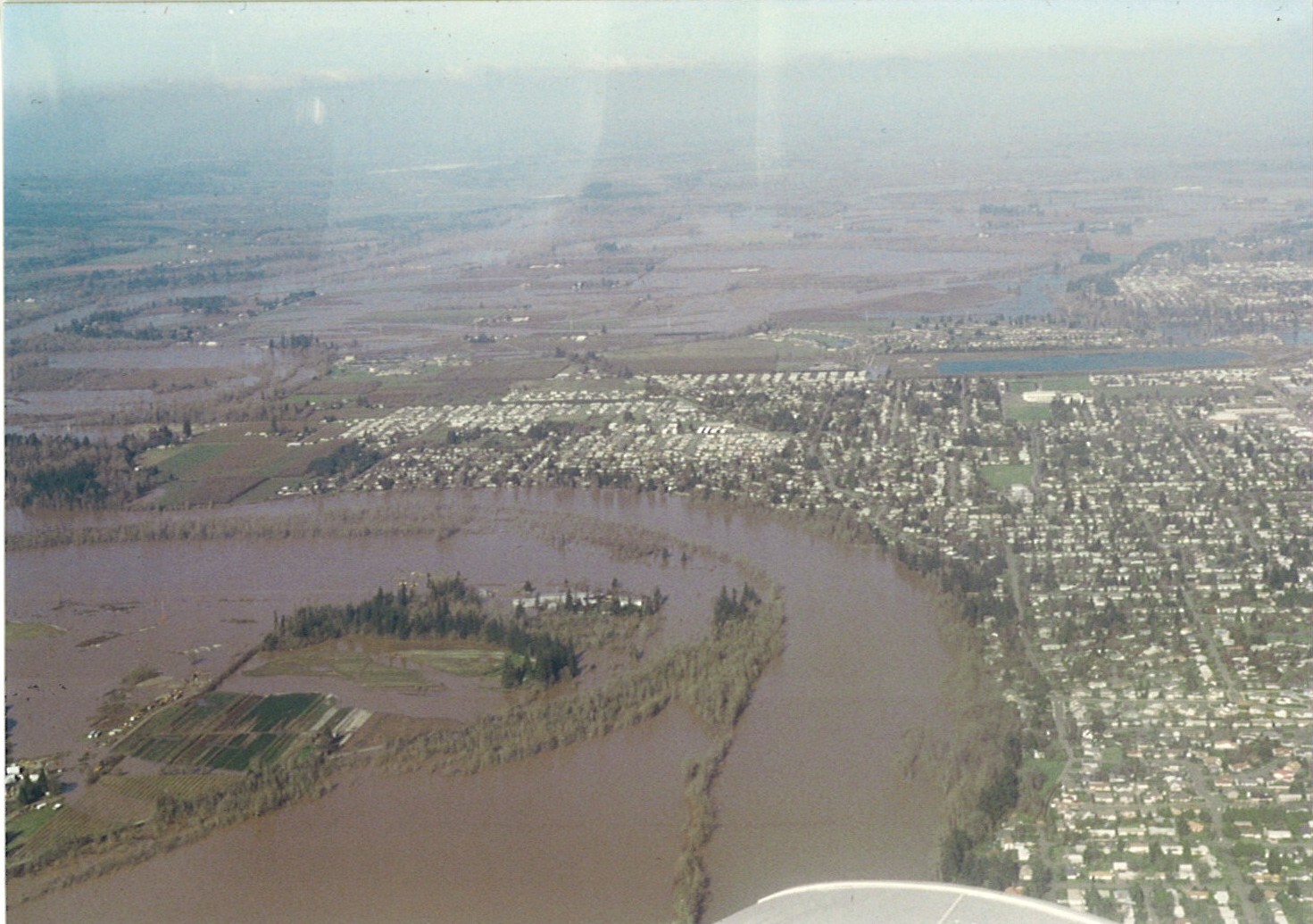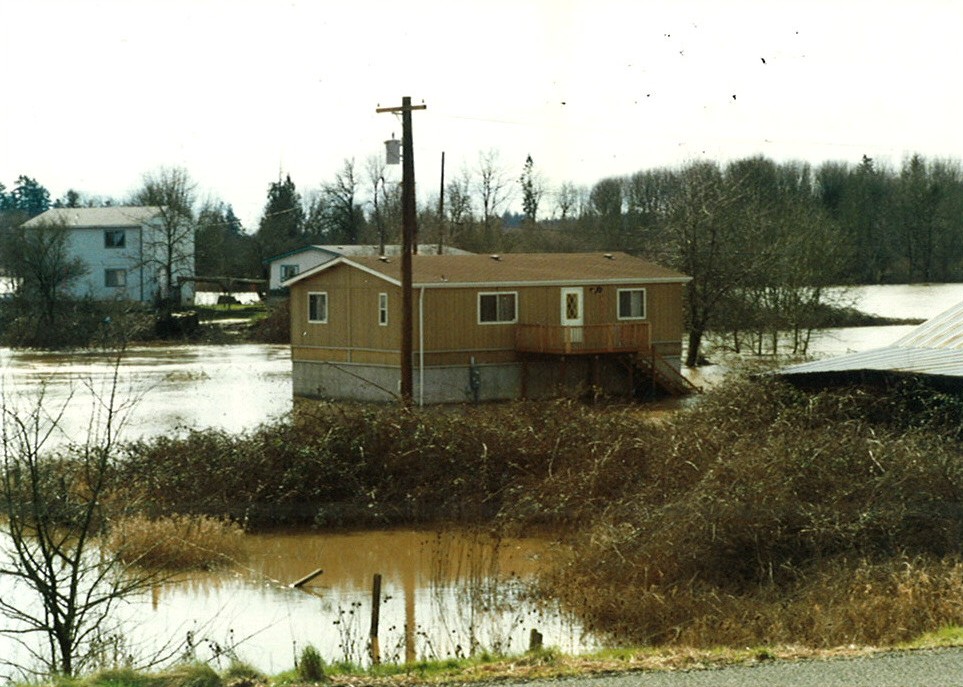Marion County Floodplain Program
What's a Floodplain Program and why is it important to Me?
Along with the Willamette River, Marion County has many streams and rivers that are subject to flooding. The purpose of Marion County's Floodplain Program is to minimize public and private losses due to flood conditions. The floodplain is land within the county that is subject to a 1% or greater chance of flooding in any given year. It is an area of special flood hazard identified by the Federal Insurance Administration in a study from 2000. The floodplain also includes areas identified and mapped by Marion County that were not included in this study. More information can be found by reviewing Marion County Rural Zone Code:
Chapter 17. 178, Floodplain Overlay Zone, that covers property outside any urban growth boundary and is the rural areas of Marion County. For property outside a city limits but within an urban growth boundary, floodplain development is covered by Marion County Urban Zone Code:
Chapter 16.19, Floodplain Overlay Zone.
To access the Marion County zoning maps, that includes floodplain overlay, click this link to our Land Use Planning and Zoning Maps. It can be difficult to navigate this online mapping program. If you would like staff to check your property, or a property you are interested in, call our office at 503-588-5038 or send an email with the address of the property to
planning@co.marion.or.us
It doesn't flood that often – does it? Historical Flooding in Marion County
So often, flooding in Marion County follows a pattern of record snowfall followed by record amounts of rain and unseasonably warm temperatures. The storms from Dec. 1996 through Feb. 1997 showed how rain and melting snow can cause these streams and rivers to overflow. As you can see from these pictures, homes and property suffered significant damage:

Willamette River overflowing, south of Salem

City of Keizer area that flooded

Pudding River overflowing
The following is a list of the most significant floods in the past 150+ years:
- 1861: largest flood of the Willamette River on record; the historic town of Champoeg disappeared.
- 1890: though not as high as 1861, this flood caused extensive damage, flooding all of downtown Salem.
- 1894: one of the worst high-water events of the 19th century in Oregon. Towns along the Willamette flooded, destroying mills, docks, warehouses, and transportation facilities.
- 1937: snowstorm brought 27 inches of snow in 18 hours.
- 1964: areas of Marion County received four inches of rain in 48 hours. By December 22nd, the Willamette River was rising 3 inches per hour and reached almost ten feet above flood stage. The Santiam River at Jefferson reached over 24 feet. Over 300 homes were evacuated around Keizer. Detroit had a 14 inch snowpack followed by 5 inches of rain in 24 hours.
- 1974: heavy snow and a series of storms caused flooding - nine counties were declared disaster areas.
- 1996: snow-pack, warm temperatures, and record-breaking rains caused streams to rise to all-time flood levels.
- 2005: Willamette River exceeded flood stage caused by heavy rains.
- 2012: areas south of Salem received over nine inches of rain within a five-day period.
Developing Property in a Floodplain or Floodway
Developing property in a floodplain or floodway usually requires review and approval of a Floodplain Development Permit. As noted above, the floodplain is land within the county that is subject to a 1% or greater chance of flooding in any given year. "Floodway" means the channel of a river or other watercourse and the adjacent land that must remain unobstructed to discharge floodwater without increasing the water elevation more than one foot. Floodways are identified on Flood Insurance Rate Maps (FIRMs) for Marion County. Once established, nothing can be placed in the floodway that would cause any rise in the base flood elevation.
New Construction: New dwellings, manufactured homes and related accessory structures and substantial improvement of any residential structures must meet certain requirements including elevation of lowest floor, grade and height of crawlspace, location of HVAC equipment, etc. These can be found in
MCC 16.19 for urban areas and
MCC 17.178 for rural areas.
Contact our office at (503) 588-5038 or
planning@co.marion.or.us for more information on the application, review process, etc. We provide information on a variety of flood-related issues. Staff can tell you if a property is in a flood hazard area, regulations for development and flood insurance data. We can also provide copies of elevation certificates (if applicable).
If you are concerned about development in your area, that may have occurred without permits or approval, feel free to contact our office. Staff can check to see if the required permits have been obtain and, if not, refer the matter to Marion County Code Enforcement.
This page includes information on flood insurance, coverage, and links to other resources.
This page includes information on preparing for a flood, evacuating, what to do immediately after a flood, as well as links to other resources, including the County's stormwater drainage program.
My House Flooded - Now What?
After a flood, FEMA requires the county to notify homeowners, who experienced a substantial amount of damage, that, in order to repair your dwelling, you may have to obtain permits from Marion County Building Inspection and Planning Division. If the value of the repair work exceeds 50% of the value of the dwelling before the "start of construction" of the improvement, then FEMA requires that the county declare the dwelling "substantially damaged." The cost to repair the dwelling includes the actual value of the materials and labor, even if materials are donated or provided to you at a reduced cost or you do the work yourself.
Marion County Code requires that when a dwelling is substantially damaged it must be brought into compliance with current standards of the code for floodplain development. This includes raising the first floor of the dwelling to two feet above the Base Flood Elevation and providing openings in the foundation as part of repair work done to the dwelling.
The county will work with you to ensure whether a substantial damage assessment is correct and you will have the opportunity to provide evidence that the damage to your dwelling does not exceed 50% of the value of the dwelling prior to the flood. Such evidence could include providing a contractor's estimate of repair or a recent appraisal of the dwelling. Also, there may be grants or loans available from state or federal agencies to assist in the repair of your dwelling.
FEMA's "Six Ways to Protect Your Home" provides tips and recommendations on retrofitting a home for flooding.
General Floodplain Information
Floodplain Elevation Certificates - A list of FEMA elevation certificates (by address) submitted since 1979 for construction in the Marion County Special Flood Hazard Areas. Please note this does not include property inside any city within Marion County.
 Important Information for People Living In or Near Floodplains - Recent flood events, causes of flooding, insurance, safety tips, and a list of contacts.
Important Information for People Living In or Near Floodplains - Recent flood events, causes of flooding, insurance, safety tips, and a list of contacts.
Important Links
FEMA Homepage
FEMA Map Service Center
FEMA Flood Smart
Marion County Emergency Management
